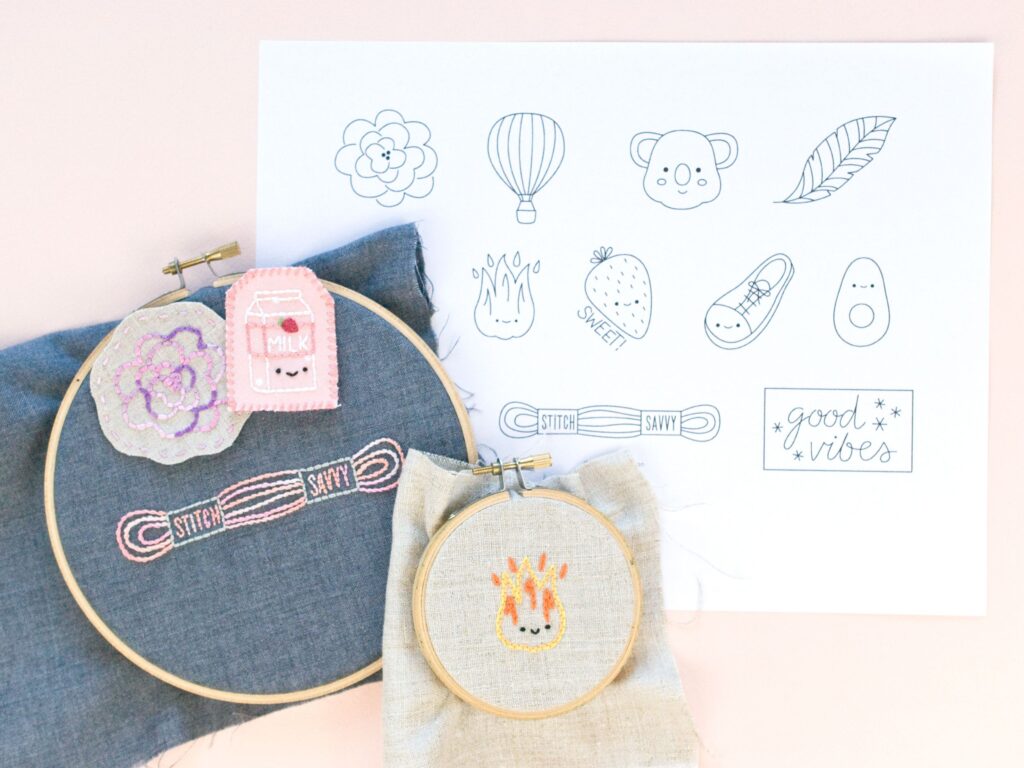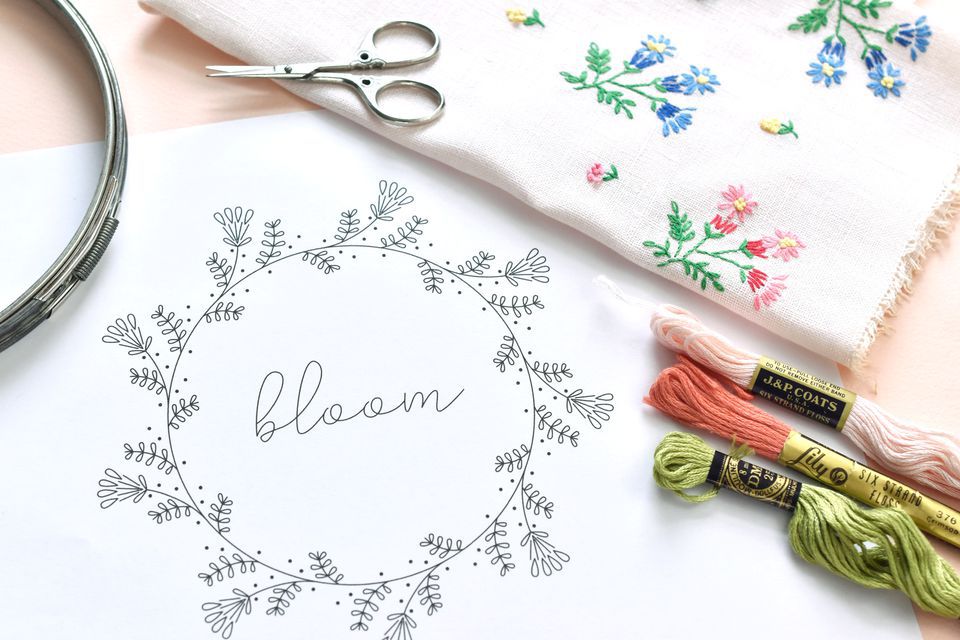Last Updated on March 7, 2023 by Anna Dees

Image Source: tatasol.com
Embroidery patterns are designs that are used to create embroidery stitches on a fabric. They can be simple or intricate, and can be used to create a wide variety of designs.
In this blog post, we will show you how to transfer an embroidery pattern onto fabric so that you can create your own beautiful designs.
Different Methods On How To Transfer Embroidery Pattern
There are a few different methods that you can use to transfer your embroidery patterns onto fabric. Here is a complete guide on how to do so:
1. Tracing

Image Source: thesprucecrafts.com
This is probably the simplest and most common method of transferring an embroidery pattern. All you need is a piece of tracing paper and a pencil. Place the tracing paper over the top of the pattern and use the pencil to trace around the design. Once you have finished tracing, simply remove the tracing paper and transfer the design onto your fabric using a pen or a stitchable fabric marker.
One advantage of tracing is that it is a very simple and straightforward method. All you need is a piece of tracing paper and a pencil, and you can easily transfer your design onto fabric. Another advantage is that it is easy to make adjustments to the design if you need to.
Some materials in tracing are:
- Freezer Paper
Freezer paper is a type of paper that has a plastic coating on one side. This coating makes it possible to iron the paper onto fabric, which makes it ideal for transferring embroidery patterns. To use freezer paper, trace your pattern onto the non-coated side of the paper. Then, cut out the design and iron it onto your fabric, coated side down. Once the design has been transferred, simply stitch along the lines.
- Stencils
Stencils are another quick and easy way to transfer an embroidery pattern onto fabric. To use a stencil, simply place it over the top of your fabric and trace around the design with a pen or a stitchable fabric marker. Once the design has been transferred, simply remove the stencil and stitch along the lines.
- Carbon Paper
Carbon paper is a type of paper that has a dark pigment on one side. This pigment makes it possible to transfer a design onto fabric by tracing over the top of the carbon paper with a pencil. To use carbon paper, place the carbon paper on top of your fabric and trace around the design with a pencil. Once the design has been transferred, simply remove the carbon paper and stitch along the lines.
- Embroidery Paper
Embroidery paper is a type of paper that is designed specifically for transferring embroidery patterns onto fabric. To use embroidery paper, simply trace your pattern onto the paper and then stitch along the lines. Once you have finished stitching, the paper will dissolve in water, leaving behind your design.
2. Photocopying

Image Source: canon.ge
If you want to enlarge or reduce the size of your pattern, photocopying is the best way to do it. Simply place your pattern onto a photocopier and enlarge or reduce it to the desired size. Once you have copied the design, transfer it onto your fabric using a pen or a stitchable fabric marker.
One benefit of photocopying is that it is very easy to change the size of your pattern. This can be useful if you want to make a smaller or larger version of the same design. Another advantage is that you can make multiple copies of the same pattern, which can be helpful if you want to make several of the same item.
3. Printing

Image Source: thesprucecrafts.com
If you have a printer, you can print your pattern directly onto fabric. Simply place your fabric onto the printer and select the “print on fabric” setting. Once the design has been printed, transfer it onto your fabric using a pen or a stitchable fabric marker.
One advantage of printing is that it is very quick and easy. All you need is a printer and some fabric, and you can transfer your design onto fabric in just a few minutes. Another advantage is that you can make multiple copies of the same pattern, which can be helpful if you want to make several of the same item.
These are just some of the ways that you can transfer an embroidery pattern onto fabric. Choose the method that you think will work best for you and give it a try!
Final Words
Embroidery is a beautiful way to decorate fabric. You can embroider on clothing, household items like towels and tablecloths, or even create wall hangings and other decorations.
Transferring an embroidery pattern to fabric is the first step in creating an embroidered item. There are several different ways to transfer an embroidery pattern, and the best method for you will depend on the type of fabric you’re working with and the design of your pattern.

I’m Anna Dees, founder and editor of grandmaembroidery.com. I have been in the embroidery business for more than two decades, providing customers with quality fabric, threads, designs and helpful advice to create beautiful projects. My blog is dedicated to sharing my knowledge, tips and tricks related to embroidery as well as showcasing the work of fellow embroiderers around the world. I’m passionate about helping others learn more about this wonderful craft and fostering a sense of community among embroidery enthusiasts. With grandmaembroidery.com, I aim to be your go-to source for all things related to embroidery!
